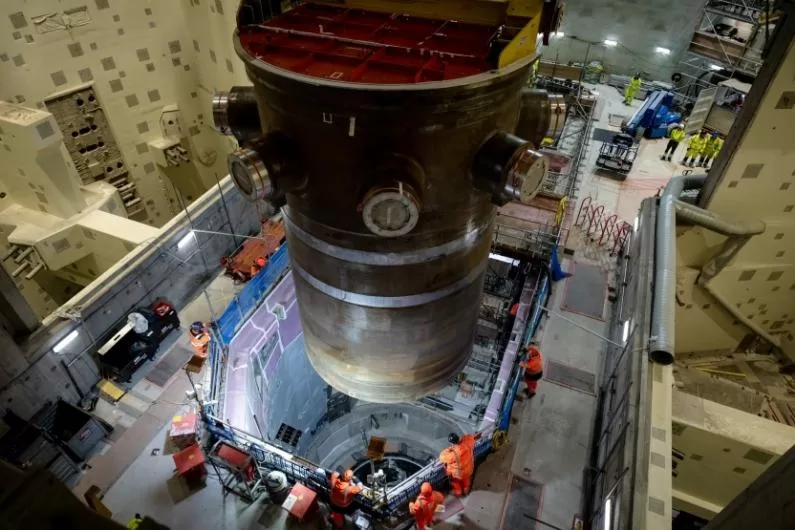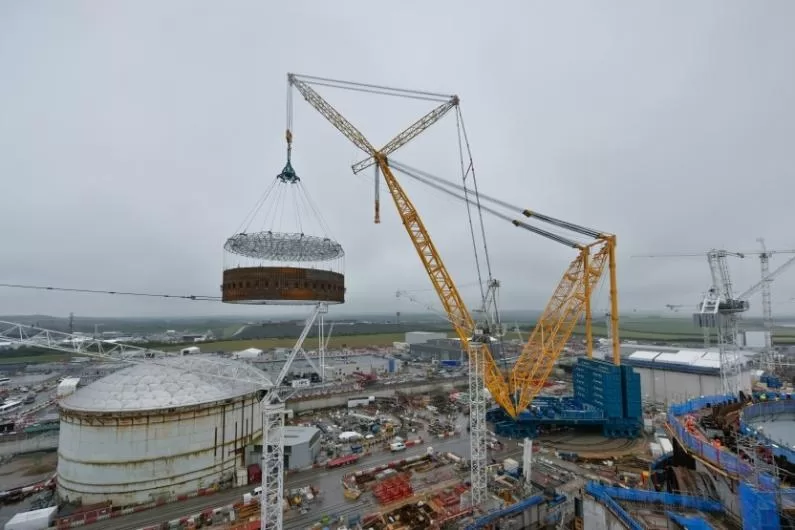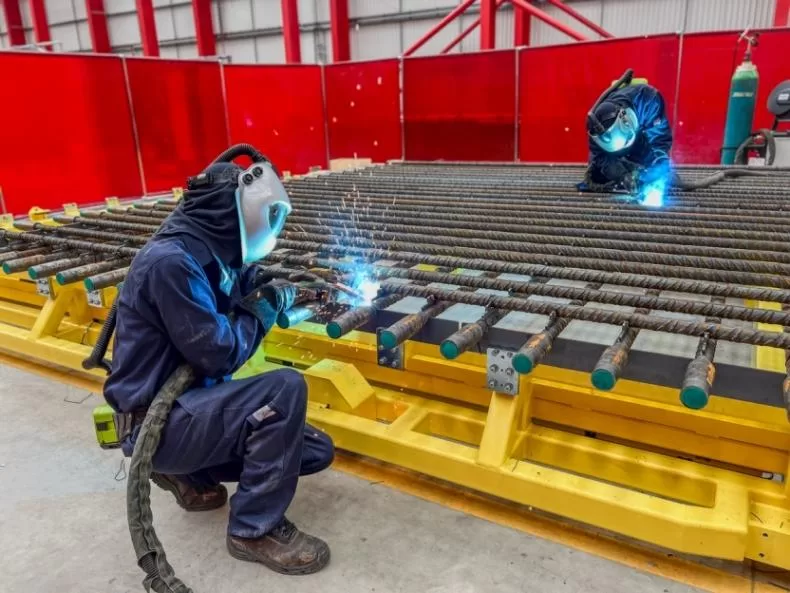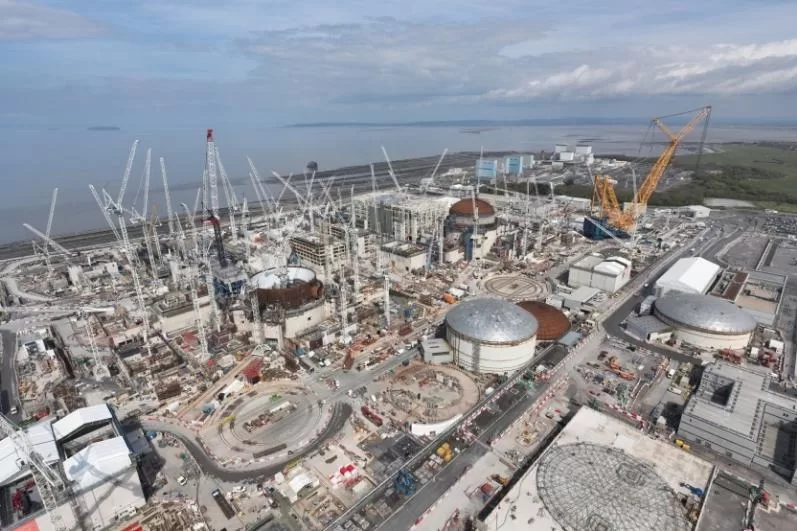Early December saw the fitting of Hinkley Point C’s first nuclear reactor that is expected to power up to 3 million homes with reliable, low-carbon energy. The installation of the 13-meter long “reactor pressure vessel” (RPV) – the first of two – will supply Britain with up to 7% of its electricity once they are both operational.
The RPV will hold the nuclear fuel used to generate heat that will produce steam for the large turbine (Arabelle turbine).
This milestone was hailed as a “significant feat of engineering” by UK’s Energy Secretary, Ed Miliband. He termed the HPC milestone as a “major step forward for the UK’s most advanced nuclear project.”
The installation of the Arabelle turbine for the EDF Energy and China General Nuclear Power Group owned project has already began.

More recent updates
February saw the start of tunnel construction connecting to the Bristol Channel. This milestone at the start of the year marked a major step in the construction of the cooling water system for the power station. The six 5,000 tonne shaft liners installed onto the seabed in 2022 were to be connected to the 5-miles of tunnels. Their utility is to allow for water to circulate to the nuclear power station.
July had the installation of the “heart” of the new nuclear power station. This monumental event followed the another – the lifting of the reactor building roof the previous year. The mid-year events featured the prep work for the installation of the first nuclear reactor, steam generators and the world’s largest turbine, the Arabelle turbine. Tunnel construction was nearing completion at this time. Work was also nearing completion on the 50-meter-tall Turbine Hall that was to house the Arabelle turbine.
At this point, more than £5 billion had been spent on the project. This also saw around 3,800 British businesses closely involved in the project. This massive energy investment in Britain is set to provide 6 million households with low-carbon energy – helping Britain achieve new zero and energy security.
October saw the lifting of the third and final steel liner ring at Hinkley Point C’s second reactor building. The 423-tonne, 47-meters wide, and 11.6-meters high steel ring formed the inner part of the containment wall of the reactor building. It will be encased in concrete, and complete the housing for two nuclear reactors at Hinkley Point C. The dome to cover the circular structure will be lifted into place next year.

Investment in modular construction
Hinkley Point C has also done well in the investment in modular construction. By July this year, their new manufacturing factories in Bristol had cut-back on manufacturing time by 20%, and on site installation time by 75%.
Featured materials for modular construction taken up by the HPC nuclear energy project include:
- Steel rebar supplied by the rebar factory in Avonmouth
- Stainless-Steel tanks that have been prefabricated and assembled at Framatome’s factory in Avonmouth
- Loading pit prefabrication. The 1,305-tonne fuel handling structure was lifted in place by Big Carl (world’s largest crane) after on-site assembly

Social and economic utility by the Hinkley Point C project
The Hinkley Point C has also proven all-round utility after nuclear industry figures back in November revealed the following:
- Up to 3,500 jobs in Bristol were now supported by the nuclear industry. The number is around 27,000 in the larger South-West region – an estimate three times more than in 2014
- More than 300 companies in Bristol have won contracts at Hinkley Point C, with more than £2bn being expended
- Laing O’Rourke and Framatome have opened new factories for modular construction in Avonmouth. These employ around 150 people who build modular parts for the Somerset project
- 650 Engineers at the UK EPR Engineering centre based at Aztec West are involved in the Hinkley Point C project. The number is set to increase to support Sizewell C, Britain’s next nuclear project after Hinkley Point C
- Oldbury owned by Great British Nuclear and Berkeley owned by Chiltern Vital Group offer the potential to host small modular reactors and associated economic activity like data centres.
- The University of Bristol supports world-leading nuclear research and training. Bristol also benefits from facilities to support nuclear skills and the National College for Nuclear in Somerset, Bridgwater and Taunton College and South Gloucestershire and Stroud College.
Previous cost hurdles at the Hinkley Point C nuclear plant
EDF had pushed back the commencement date of its British 3.2GW Hinkley Point C nuclear plant to 2029. This also had the cost of the undertaking ranging from £31 billion and £34 billion ($43.06 billion) according to 2015 values.
The project is the first new nuclear plant in Britain in the past two decades. It was expected to be up and running by June 2027. The most recent in cost estimates takes a range of £25 – £26 billion.
Why the Hinkley Point C nuclear plant project costs were revised
According to a statement released by EDF, based on 2015 values, the project was to come at a cost of £34 billion. It also added that the two main reasons why the cost was revised was due to civil engineering costs and lengthy electro-mechanical phase.
Stuart Crooks, Managing Director at Hinkley Point C, said in a note to staff that the entity has been forced to adapt the plant’s design to meet the country’s regulations, needing up to 7,000 changes as well as adding 70% more steel along with 25% extra concrete. He highlighted that the civil works are slower than what they had expected.
Similar nuclear energy project in the region
The British government is looking to invest a further 1.3 billion in the planned 3.2-GW Sizewell C plant. Any extra costs and schedule overruns on the Hinkley Point C will solely be handled by EDF and its partners. This is because HPC is not owned by the government. The statement reflects those of the spokesperson for the Department of Energy,
Other new nuclear projects in Europe also saw delays midst huge costs increases. These include those in Olkiluoto, Finland and Flamanville, France.
Also read:
Sizewell C nuclear power station in the UK
The UK to Develop Eight Additional Nuclear Power Plants
Hinkley Point C Nuclear Power Plant, First of its Kind to be Built in UK Since 1995

